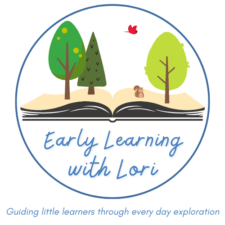Knock-Knock Jokes: Boost Preschool Learning & Fun
Knock-knock jokes might seem like just silly fun, but in early childhood classrooms, they’re a powerful tool for learning! These playful exchanges can do more than just elicit giggles. Jokes can boost preschool learning language skills, foster social-emotional development, and even help young children with thinking skills. By adding knock-knock jokes into your daily routines, you’re not just adding a touch of humor – you’re creating a fun and engaging environment where learning grows naturally.
How I Found the Magic of a Knock-Knock Joke
One of my favorite ways to transition my class from the last activity of the day to carpool was to have talent shows. As the children packed up for carpool, some would finish quickly while others needed a little extra time to gather their things. To make the most of this transition period, we started hosting impromptu talent shows.
As students finished packing and joined the circle rug, they could stand up and share a song, a joke, or any talent they wanted. While some jumped at the chance to perform, others were eager but unsure of what to do. That’s where knock-knock jokes came to the rescue!
With their predictable pattern, knock-knock jokes made it easy for everyone to participate. And, as you might imagine, we heard plenty of “original” preschool jokes, like this classic: “”Knock knock. Who’s there? Cat. Cat who? I have a cat!”
Did it make sense? Not at all. Did the kids find it absolutely hilarious? Every single time. The magic of knock-knock jokes is that they don’t have to be logical for adults—they’re all about sparking joy and giving young learners a chance to shine.
Why Use Knock-Knock Jokes in the Preschool Classroom
Jokes enhance learning by building language skills, fostering social-emotional development, and even helping with thinking skills.
Building Language Skills Through Laughter
Knock-knock jokes are great word games for young minds. They help children understand key ideas like wordplay, multiple meanings, and the tricky parts of language. When children engage with jokes, they develop language processing skills and mental adaptability.
Here’s a great example:

This joke helps children understand:
- Homonyms (“lettuce” vs. “let us”)
- Context clues (understanding weather and temperature)
- Common phrases and expressions
Consider this joke:

This joke helps children understand:
- Word sounds (“needle” vs. “need a”)
- Asking for help
- Sentence structure
Social-Emotional Benefits of Telling Jokes
In the classroom, jokes create moments of shared joy that strengthen social bonds. When children share jokes with their peers, they:
- Learn the back-and-forth rhythm of conversation
- Practice timing and delivery
- Develop empathy by gauging others’ reactions
- Build confidence through positive social interactions

This joke helps children understand:
- Feelings
- Emotional recognition (“boo hoo” = crying)
- Multiple meaning awareness
How Knock-Knock Jokes Help with Thinking Skills
The structure of knock-knock jokes—with their specific pattern and punchline—helps children develop sequential thinking and memory skills. Remembering the joke’s pattern helps them with their memory and thinking skills.
Here’s a joke to share with your class:

This joke helps children understand:
- Nature vocabulary
- Wordplay (“shell” vs. “shall”)
- What are questions and suggestions
With Knock-Knock Jokes, Learning Feels Fun
When kids are laughing, learning feels less like work and more like play. They’re more relaxed and ready to explore new things.
Tips for Adding Jokes to Your Classroom:
- Start the day with a joke: Get those giggles going!
- Use jokes during transitions: Keep the energy up between activities.
- Create a “Joke Wall”: Let kids share their favorite jokes.
- Encourage them to make up their own: Unleash their creativity!
- Talent Shows: Try an impromptu talent show when you have a long transition time to fill.
Do You Need Some Jokes for Your Preschool Classroom?
Once your students start telling knock-knock jokes, they might want some fresh materials. Here are a few suggestions:
Printable Jokes
Our Cut and Fold Knock Knock Jokes not only provide you with 15 jokes, your students also get practice cutting and folding paper to make crafts.
If you want to try out this activity, there’s a free sample version in our resource library. Join our community to access the library, get email updates, and more.
Books
Note: I don’t earn any commission from these links, I just want to share books that we have enjoyed.
Lots of Knock-Knock Jokes for Kids by Whee Winn
This book is aimed at children ages 6-10 but the jokes can be told to younger children.
Knock-Knock Jokes for Kids by Judy A. Winter
An early reader with ten knock-knock jokes.
Just Joking by National Geographic Kids
This is a series of 15 books. Great photographs! Many different kinds of humor, including knock-knock jokes.
The Bottom Line
Knock-knock jokes are simple, fun, and packed with learning opportunities. So next time you hear that familiar “Knock knock!”, remember you’re not just opening a door – you’re opening minds!







